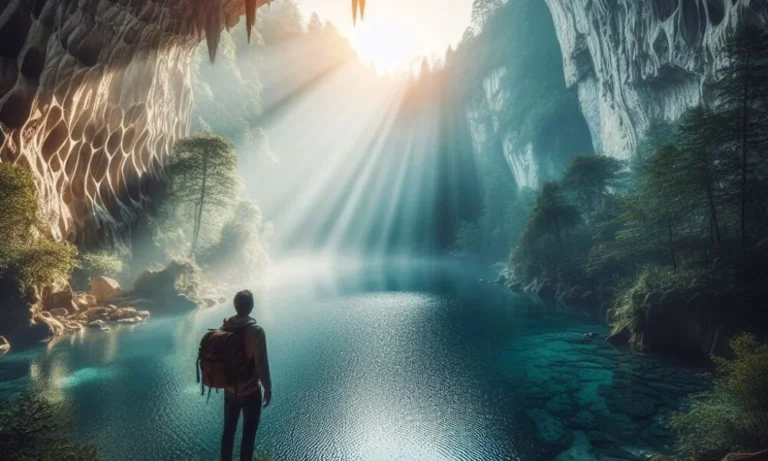Beliktal, an enigmatic term that resonates with echoes of antiquity, is an area shrouded in mystery and charm. While now not extensively identified in mainstream historical discourse, Beliktal holds a sizeable area in the annals of ancient civilizations. This article pursuits to delve into the history, culture, and interesting factors of Beliktal, imparting a complete knowledge of its significance.
The Geographical Setting
Beliktal is placed in a location that is geographically various and strategically full-size. Nestled between formidable mountain tiers and fertile valleys, Beliktal served as a crossroads for historical trade routes. The panorama is dotted with ruins and relics that trace a once-thriving civilization, making it a treasure trove for archaeologists and historians.
Historical Significance
The records of Beliktal dates back to several millennia. Archaeological evidence suggests that it turned into inhabited as early as the Neolithic period. Over time, it became a melting pot of various cultures and effects.
Early Inhabitants and Neolithic Roots: The earliest settlers of Beliktal have been primarily agrarian groups. They cultivated the fertile lands and built rudimentary settlements. Excavations have unearthed pottery, tools, and artifacts that offer insights into their everyday lives and societal structures.
The Rise of City-States: By the Bronze Age, Beliktal had evolved into a hub of metropolis-states. These city-states, every with its distinct identity and governance, have been interconnected via exchange and alliances. The town-states of Beliktal have been regarded for their enormous architecture, inclusive of temples, fortifications, and palaces.
Cultural Syncretism: Beliktal’s strategic vicinity made it a confluence of numerous cultures. Influences from neighboring civilizations which include the Mesopotamians, Persians, and Indus Valley human beings can be visible in its artwork, language, and nonsecular practices. This cultural syncretism is evident in the eclectic mix of artifacts and architectural patterns observed in the area.
Architectural Marvels
The architectural legacy of Beliktal is one of its most captivating elements. The ruins of temples, palaces, and fortifications stand as a testament to the ingenuity and craftsmanship of its historical population.
The Great Temple of Beliktal: One of the maximum iconic structures is the Great Temple of Beliktal. This temple, committed to a pantheon of deities, showcases complex carvings and enormous statues. The temple’s layout displays a blend of local and overseas architectural patterns, indicating the region’s openness to external effects.
Fortifications and Palaces: The metropolis-states of Beliktal had been often fortified with big partitions and towers. These fortifications now not simplest served as protection mechanisms but additionally as symbols of electricity and status.
Beliktal’s Role in Trade and Economy
Beliktal’s financial system became based on agriculture, alternate, and craft production. Its strategic region made it an essential hyperlink in historical alternate networks.
Agricultural Abundance: The fertile valleys of Beliktal produced a surplus of plants, which include wheat, barley, and result. This agricultural abundance supported a growing populace and facilitated exchange.
Trade Networks: Beliktal was a pivotal point in ancient exchange routes, connecting the East and West. Merchants from remote lands would converge right here to change items together with spices, textiles, metals, and ceramics. The prosperity from exchange contributed to the metropolis’s wealth and cultural dynamism.
Craftsmanship: The artisans of Beliktal were famous for their skills in pottery, metallurgy, and weaving. Their products had been a noticeable favorite inside the historic international, in addition to boosting the area’s economy.
Religious and Spiritual Life
Religion played a principal position in the lives of Beliktal’s inhabitants. The town turned into a domestic to numerous temples, shrines, and nonsecular gala.
Pantheon of Deities: The people of Beliktal worshipped a numerous pantheon of gods and goddesses. These deities were regularly related to natural factors inclusive of the solar, moon, rivers, and mountains. Religious texts and inscriptions provide valuable insights into their ideals and rituals.
Religious Festivals: Annual festivals and ceremonies have been a critical part of Beliktal’s cultural life. These events, marked by way of tune, dance, and theatrical performances, served each nonsecular and social capabilities, fostering a feel of network and continuity.
Spiritual Practices: In addition to formal spiritual practices, Beliktal’s population engaged in various religious and mystical practices.
The Decline and Legacy
Like many historic civilizations, Beliktal sooner or later faced decline. Several factors contributed to its fall, including environmental modifications, invasions, and shifts in trade routes.
Environmental Changes: Changes in climate and natural failures might also have disrupted agricultural manufacturing, leading to meal shortages and populace decline.
Invasions: Beliktal was periodically threatened by invasions from neighboring tribes and empires. These conflicts weakened the metropolis-states and contributed to their eventual decline.
Shift in Trade Routes: The emergence of recent alternate routes diminished Beliktal’s strategic significance, main to financial decline.
Despite its fall, the legacy of Beliktal endures. The ruins and artifacts left behind offer invaluable insights into the vicinity’s records and way of life. Modern students continue to discover new aspects of Beliktal’s beyond, ensuring that its tale remains alive.
Conclusion
Beliktal, with its wealthy records, architectural marvels, and cultural significance, is a testament to the ingenuity and resilience of ancient civilizations. While a good deal approximately this enigmatic land stays shrouded in thriller, ongoing studies, and exploration continue to shed mild on its exciting past. Beliktal stands as a reminder of the complexities and achievements of early human societies, inviting us to discover and appreciate the depths of our shared history.
